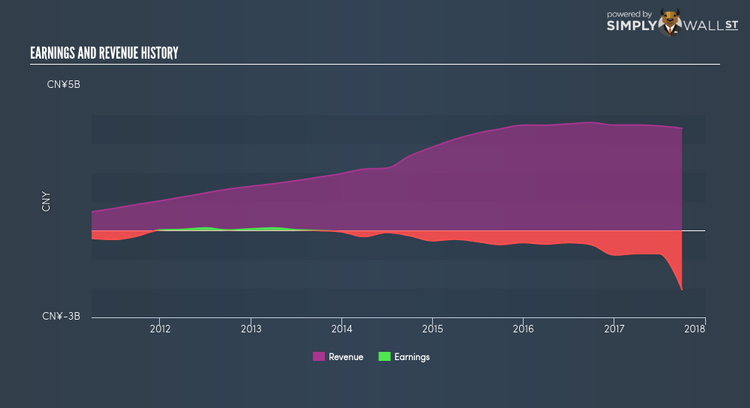How Does Investing In 21Vianet Group Inc (NASDAQ:VNET) Impact Your Portfolio?

If you are looking to invest in 21Vianet Group Inc’s (NASDAQ:VNET), or currently own the stock, then you need to understand its beta in order to understand how it can affect the risk of your portfolio. VNET is exposed to market-wide risk, which arises from investing in the stock market. This risk reflects changes in economic and political factors that affects all stocks, and is measured by its beta. Not all stocks are expose to the same level of market risk, and the broad market index represents a beta value of one. Any stock with a beta of greater than one is considered more volatile than the market, and those with a beta less than one is generally less volatile.
See our latest analysis for 21Vianet Group
What is VNET’s market risk?
With a beta of 1.43, 21Vianet Group is a stock that tends to experience more gains than the market during a growth phase and also a bigger reduction in value compared to the market during a broad downturn. According to this value of beta, VNET can help magnify your portfolio return, especially if it is predominantly made up of low-beta stocks. If the market is going up, a higher exposure to the upside from a high-beta stock can push up your portfolio return.
Could VNET’s size and industry cause it to be more volatile?
With a market cap of USD $968.01M, VNET falls within the small-cap spectrum of stocks, which are found to experience higher relative risk compared to larger companies. In addition to size, VNET also operates in the internet industry, which has commonly demonstrated strong reactions to market-wide shocks. As a result, we should expect higher beta for small-cap stocks in a cyclical industry compared to larger stocks in a defensive industry. This supports our interpretation of VNET’s beta value discussed above. Next, we will examine the fundamental factors which can cause cyclicality in the stock.
How VNET’s assets could affect its beta
During times of economic downturn, low demand may cause companies to readjust production of their goods and services. It is more difficult for companies to lower their cost, if the majority of these costs are generated by fixed assets. Therefore, this is a type of risk which is associated with higher beta. I test VNET’s ratio of fixed assets to total assets in order to determine how high the risk is associated with this type of constraint. Given that fixed assets make up less than a third of the company’s total assets, VNET doesn’t rely heavily upon these expensive, inflexible assets to run its business during downturns. Thus, we can expect VNET to be more stable in the face of market movements, relative to its peers of similar size but with a higher portion of fixed assets on their books. This outcome contradicts VNET’s current beta value which indicates an above-average volatility.
What this means for you:
Are you a shareholder? You may reap the gains of VNET’s returns during times of economic growth by holding the stock. Its low fixed cost also implies that it has the flexibility to adjust its cost to preserve margins during times of a downturn. I recommend analysing the stock in terms of your current portfolio composition before deciding to invest more into VNET. For next steps, take a look at VNET’s outlook to see what analysts are expecting for the stock on our free analysis plaform here.
Are you a potential investor? I recommend that you look into VNET’s fundamental factors such as its current valuation and financial health. Take into account your portfolio sensitivity to the market before you invest in the stock, as well as where we are in the current economic cycle. VNET may be a great investment during times of economic growth. Continue your research on the stock with our free fundamental research report for VNET here.
To help readers see pass the short term volatility of the financial market, we aim to bring you a long-term focused research analysis purely driven by fundamental data. Note that our analysis does not factor in the latest price sensitive company announcements.
The author is an independent contributor and at the time of publication had no position in the stocks mentioned.

